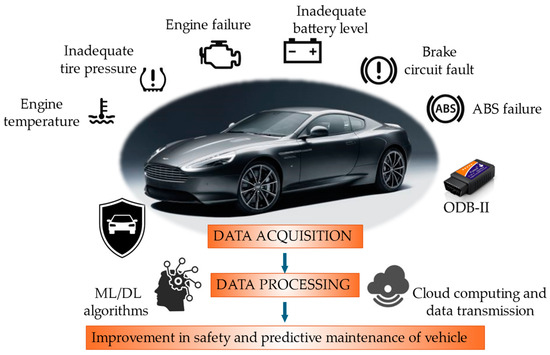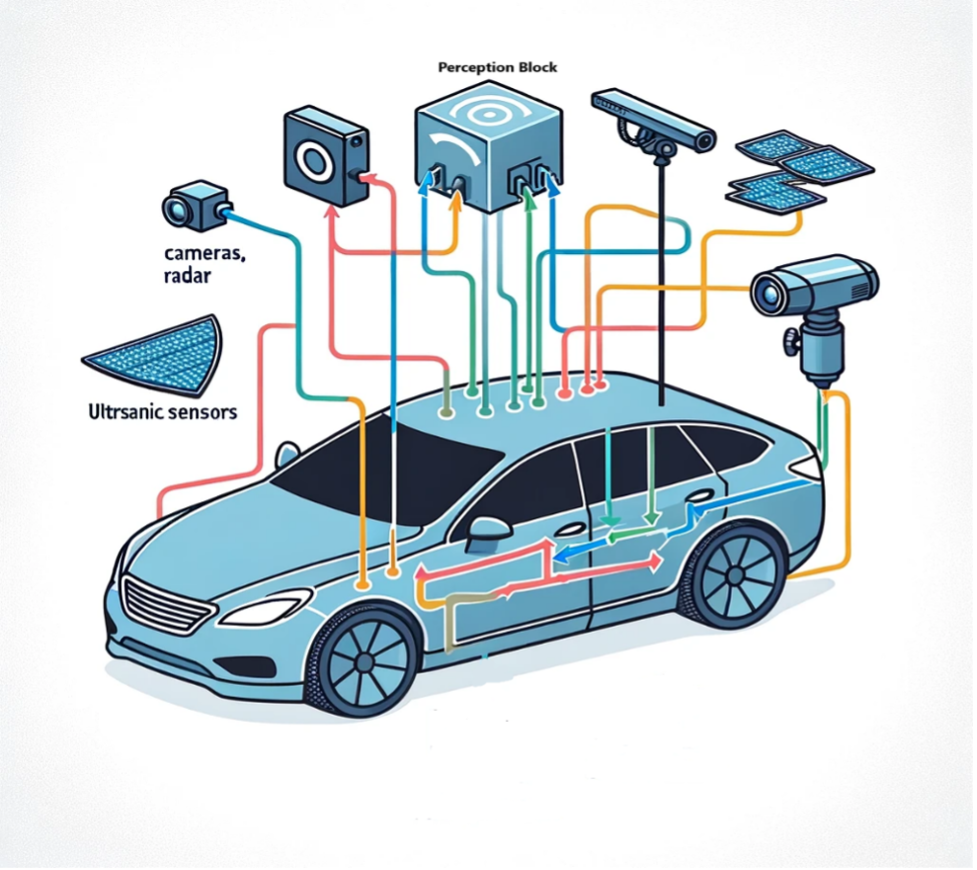Last Updated on November 25, 2025 by Aaron Blake
Have you ever wondered how your car knows exactly when to adjust speed, improve fuel efficiency, or keep you safe on the road? The secret lies in the smart sensors hidden throughout your vehicle.
These tiny devices work nonstop to boost your car’s performance and make every drive smoother and more reliable. If you want to understand how these sensors can transform your driving experience and get the most out of your car, keep reading.
You’ll discover how this technology puts control and confidence right at your fingertips.

Credit: www.mdpi.com
Contents
Types Of Car Sensors
Car sensors help improve vehicle performance and safety. They send data to the car’s computer.
Different sensors monitor various parts of the car. This allows better control and efficiency.
Engine Performance Sensors
These sensors check the engine’s condition and fuel use. They help keep the engine running well.
Common engine sensors include oxygen sensors, temperature sensors, and throttle position sensors. They send signals to adjust fuel and air mix.
- Oxygen Sensor: Measures oxygen in exhaust gases.
- Temperature Sensor: Monitors engine heat levels.
- Throttle Position Sensor: Tracks throttle opening.
- Mass Air Flow Sensor: Measures air entering engine.
- Knock Sensor: Detects engine knocking sounds.
Safety And Collision Sensors
Safety sensors protect passengers by detecting dangers. They help prevent accidents and injuries.
These sensors include airbags, parking sensors, and collision warning sensors. They alert drivers or take action to avoid crashes.
- Airbag Sensor: Triggers airbags in a crash.
- Parking Sensor: Helps avoid obstacles when parking.
- Collision Sensor: Warns of possible collisions.
- Blind Spot Sensor: Alerts about vehicles nearby.
- Lane Departure Sensor: Detects drifting out of lanes.
Environmental And Emission Sensors
These sensors monitor the car’s impact on the environment. They help reduce pollution and meet regulations.
They track exhaust gases and fuel efficiency. This helps keep the car cleaner and saves fuel.
- Exhaust Gas Sensor: Measures harmful gases from the engine.
- Evaporative Emission Sensor: Detects fuel vapor leaks.
- Fuel Level Sensor: Monitors fuel amount in the tank.
- Air Quality Sensor: Checks air inside the car cabin.
- Carbon Monoxide Sensor: Detects dangerous gas levels.
Enhancing Fuel Efficiency
Car sensors help improve fuel efficiency by giving real-time data. This data lets the engine work better and save fuel.
These sensors monitor many parts of the car. They adjust settings to use less fuel and reduce waste.
Optimizing Air-fuel Mixture
Sensors measure the amount of air and fuel going into the engine. They keep the mix balanced for best burning.
A correct air-fuel mix helps the engine run smoothly. It uses less fuel and lowers emissions.
Monitoring Tire Pressure
Tire pressure sensors check if tires have the right air level. Proper pressure reduces rolling resistance.
Good tire pressure improves fuel efficiency and makes driving safer. Low pressure causes the engine to work harder.
- Right tire pressure saves fuel
- Improves tire life
- Enhances vehicle control
Adaptive Cruise Control Impact
Adaptive cruise control uses sensors to keep a steady speed and distance from other cars. This smooths driving.
Smoother driving means fewer stops and starts. The engine uses fuel more efficiently on highways.
Boosting Vehicle Safety
Car sensors help drivers stay safe on the road. They detect dangers and alert the driver quickly.
These sensors improve how a vehicle performs in emergencies. They reduce accidents and protect passengers.
Collision Avoidance Systems
Collision avoidance systems use sensors to spot obstacles in front of the car. They warn the driver or apply brakes automatically.
- Detect nearby vehicles and objects
- Alert driver with sounds or lights
- Apply brakes to prevent crashes
- Work well in busy traffic and bad weather
Lane Departure Warnings
Lane departure warnings use cameras and sensors to track the car’s position. They alert the driver if the car drifts out of its lane.
| Feature | Purpose |
| Lane detection | Tracks vehicle position |
| Warning alerts | Notify driver of lane drift |
| Steering assist | Helps keep car in lane |
Blind Spot Detection
Blind spot detection sensors monitor areas beside and behind the car. They warn drivers about vehicles that are hard to see.
- Reduces side collisions
- Alerts before lane changes
- Improves driver confidence
- Works in all weather conditions

Credit: chaklader.medium.com
Future Sensor Technologies
Car sensors are changing how vehicles perform. New sensor technologies will make cars smarter and safer. These sensors collect data and help cars respond quickly.
Future sensors will work with new tools like artificial intelligence. This will improve driving and keep passengers safe.
Ai And Machine Learning Integration
AI and machine learning help cars understand sensor data better. Cars learn from patterns to improve performance. This makes driving smoother and safer.
- Predict road conditions
- Detect obstacles faster
- Adjust speed automatically
- Improve fuel efficiency
Advanced Driver Assistance Systems
Advanced Driver Assistance Systems (ADAS) use sensors to help drivers. These systems warn drivers and control the car in tricky situations. This reduces accidents and stress.
| Sensor Type | Function | Benefit |
| Radar | Detects distance and speed of objects | Helps with adaptive cruise control |
| Lidar | Measures distance with laser light | Improves object detection accuracy |
| Cameras | Capture images for object recognition | Supports lane keeping and traffic sign reading |
Sensor Fusion For Smarter Cars
Sensor fusion means combining data from many sensors. This helps the car make better decisions. It creates a full picture of the car’s surroundings.
Benefits of Sensor Fusion:
- Increased accuracy in object detection
- Better response to changing conditions
- Improved safety through redundancy
- Enhanced navigation in complex environments

Credit: www.mdpi.com
Frequently Asked Questions
What Types Of Car Sensors Boost Vehicle Performance?
Sensors like oxygen, mass airflow, and temperature sensors help optimize engine efficiency and power.
How Do Car Sensors Affect Fuel Efficiency?
They monitor fuel and air mix, ensuring the engine uses fuel in the best way.
Can Sensors Detect Engine Problems Early?
Yes, sensors spot issues early, preventing bigger damage and costly repairs.
Do Sensors Improve Car Safety And Performance?
Yes, sensors help control systems like ABS and traction, enhancing safety and handling.
How Often Should Car Sensors Be Checked Or Replaced?
Check sensors during regular maintenance; replace if faulty to keep performance steady.
Conclusion
Car sensors help cars run smoothly and safely. They monitor engine health and improve fuel use. Sensors detect problems early, saving money on repairs. They also boost driving comfort and control. Smart sensors keep the car’s parts working well. This technology makes cars more reliable every day.
Understanding car sensors helps you value modern vehicles. They play a key role in car performance. Simple but powerful tools inside your car. Sensors keep your driving experience better and safer.





